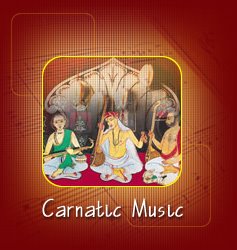Indian Popular MUSIC
I INTRODUCTION
Indian Popular Music, the popular music of the Indian subcontinent, comprising India and the neighbouring South Asian countries of Pakistan, Bangladesh, and Sri Lanka। The subcontinent supports a population of over a billion people and has one of the world’s most extensive popular music industries. Since the 1930s, Indian popular music has thrived as a unique set of genres, in some cases synthesizing Western influences with indigenous ones to produce a wholly original style. Most Indian popular music is associated with the commercial film industry, centred on Mumbai (formerly known as Bombay), in which song-and-dance scenes are inserted into plots. Both Indian cinema and its film music are widely popular elsewhere in the developing world, from Africa and the Middle East to Eastern Europe and other parts of Asia.
II MUSICAL CHARACTERISTICS
While it is difficult to generalize about such a vast and diverse entity, certain observations can be made about Indian popular music। Like classical Indian music and Indian folk music, it is overwhelmingly monophonic: melodies are sung or played solo, rather than in harmony with another singer. However, chordal harmonies (though not necessarily Western tonality) are often present in instrumental accompaniments, which may combine Western instruments like violins and clarinets with indigenous ones like the dholak barrel drum. The vocal style is usually distinctively South Asian, featuring characteristic forms of ornamentation and melisma (singing several notes to a single syllable). Many film songs are studio adaptations of traditional folk songs; others reflect the influence of modern Western music in their use of disco rhythms, synthesizers, and other features. Although in the north most songs are in Hindi or Urdu, regional-language films and songs are also popular in other parts of the country.
III HISTORY
A Film Music
The Indian music industry got off to an early start with the production of local recordings in 1901. In the subsequent decades the market for records of classical and light-classical songs grew, although gramophone ownership was largely limited to the wealthy urban bourgeoisie. In the early 1930s sound cinema was introduced to the subcontinent, and locally produced films soon became widely popular. Almost all commercial films were musicals incorporating songs and dances, in the manner of traditional folk and urban theatre, and cinema became the primary medium for the production and consumption of popular music.
The first generation of Indian sound films featured singer-stars like K। L. Saigal who both sang and acted. By the mid-1940s, however, the so-called playback system became standard, in which the actors did not sing themselves, but mouthed words in lip-sync to songs recorded later by expert vocalists. These songs were also broadcast on radio, and were marketed separately as records for those who could afford them. Folklorists lament that Bombay-produced commercial film music often seems to be eroding the popularity of local traditional folk music produced by regional communities. Meanwhile, many folk performers update their repertoire by including film songs, or by setting their own texts, often in local dialect, to familiar film melodies. By the 1950s the film industry had grown phenomenally, and soon became the largest in the world, producing some 700 feature films annually. Production of popular music tended to rest in the hands of a single record company (the British-owned EMI) and to be dominated by a small group of music directors and playback singers. Music directors like Naushad and S. D. Burman composed scores for hundreds of films, while top singers like Lata Mangeshkar, Asha Bhosle, Mohammed Rafi, and Katasseril Jesudas have each recorded several thousand film songs. Most were sentimental love songs designed to fit the romantic and often escapist cinematic melodramas. In the 1970s action-oriented films became more popular, and disco influence became more prominent in film music.
B Other Popular Styles
From the 1930s to the late 1970s film music, as produced by a handful of singers and directors and marketed by EMI, accounted for the vast majority of Indian popular music। In the late 1970s and early 1980s the spread of cheap audio cassette players dramatically restructured the popular music industry. Since cassettes and cassette players are so cheap, portable, and durable, many millions of poorer rural consumers could afford them and thus enter the popular music market. Most importantly, the low cost of cassette production enabled several hundred small- and medium-scale producers to emerge, often producing regional-dialect folk or folk-pop hybrid styles for local consumers and competing with the mass-produced film songs. As a result the popular music industry has become much more decentralized, and its products much more diverse in terms of style, language, and subject matter. Regions like the Punjab emerged as particularly dynamic centres for the production of new pop styles.
IV CURRENT TRENDS
Indian popular music has continued to evolve and thrive. Western influence remains strong, and many film music composers borrow pop melodies from the West. Nevertheless, the thriving cottage-industry cassette producers still rely heavily on regional folk music for inspiration and ideas. Meanwhile, South Asian diaspora communities have come to cultivate their own hybrid popular styles. In the United Kingdom, South Asians of Punjabi descent have popularized a dynamic hybrid style called bhangra, which typically combines Punjabi folk melodies with elements of disco, techno-pop, and dance-hall reggae. East Indians in Trinidad have also created a lively folk-pop idiom called chutney, which fuses Indian-style folk tunes with calypso rhythms.
Subscribe to:
Post Comments (Atom)



No comments:
Post a Comment